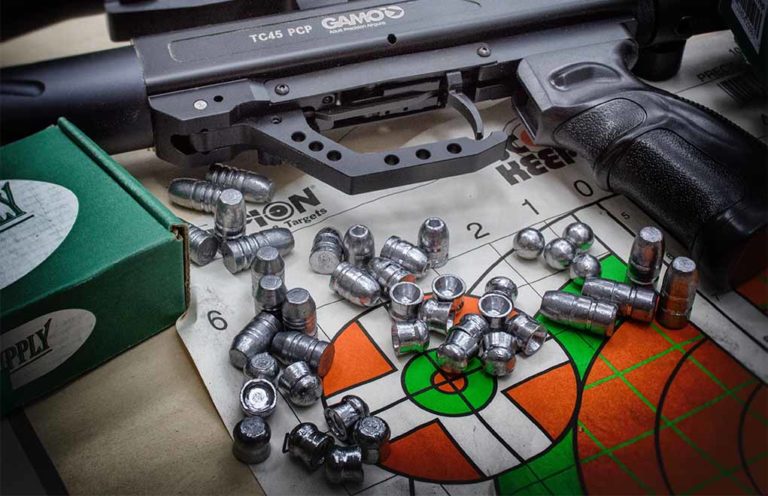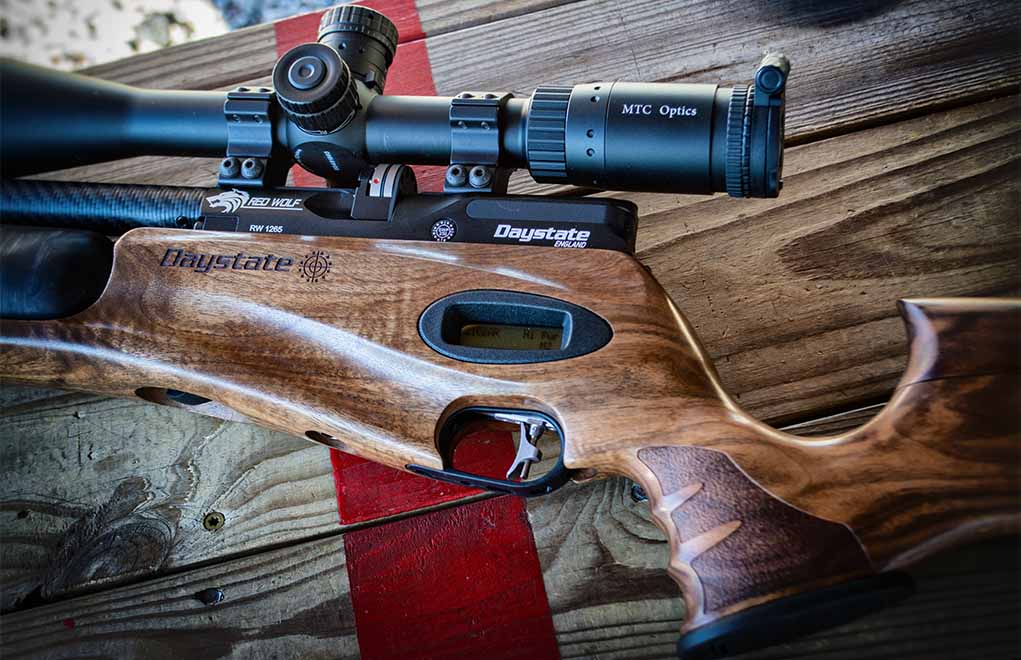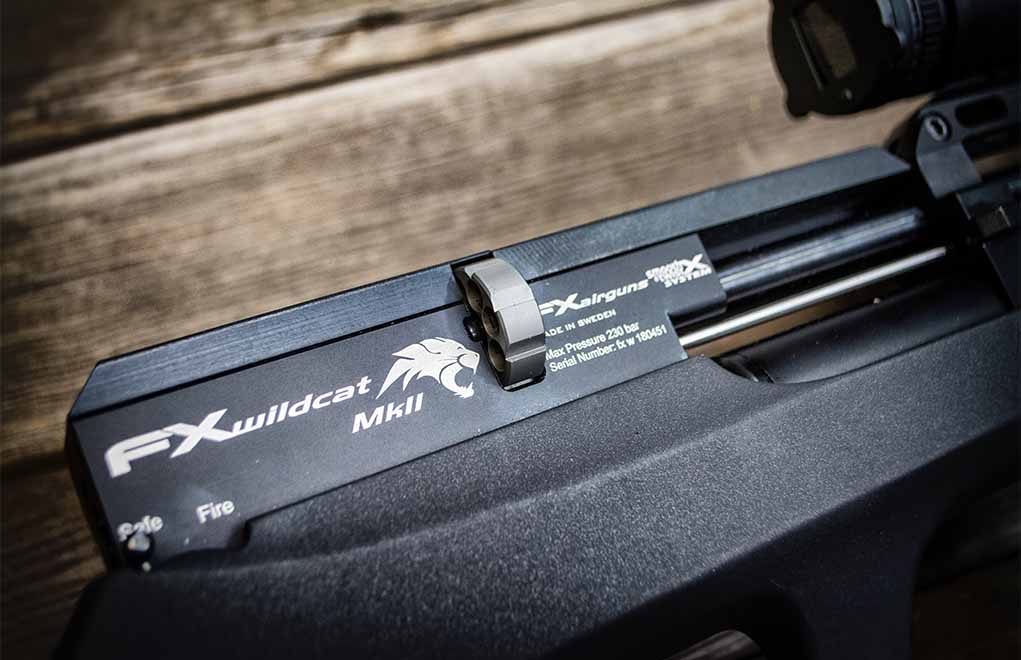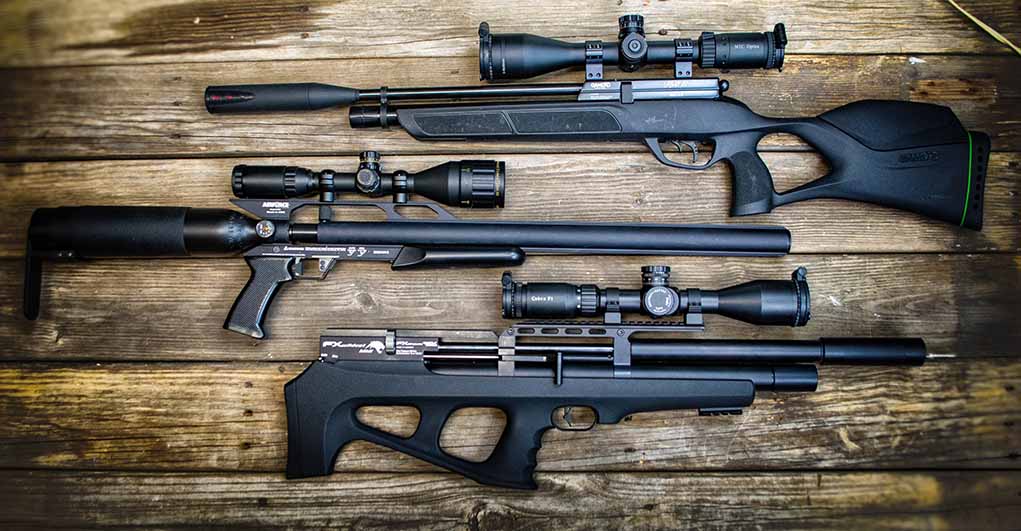

The air rifle and air pistol have come a long way since the days of .177-caliber pellets and Red Ryder lever-actions. Find out what's available now.
It’s easy for rimfire and centerfire aficionados to scoff at airguns while picturing a childhood Daisy Red Ryder or a break-action rifle that lines the shelves of the local big-box stores. They’re toys—right?
Modern airguns are marvels of precision, engineering and power. Can you shoot them accurately at distances in the three-digit yardage range? Yes. Can you hunt small game with them? Again, yes. Can you hunt large game with them? Why, yes, you can. Are there airguns that cost thousands of dollars that are worth that hefty price tag? Yup.
When you boil it all down, airguns and rimfires (or centerfires) are more alike than they are different. Both use high-pressure air (or gas, if you will) to drive a projectile through a barrel with enough velocity to perforate targets, knock down steel or take game. How they differ is in the method by which they supply and deliver that air to the hind side of the projectile.
Spring- Vs Piston-Powered
These guns, such as the ubiquitous Daisy Red Ryder, convert mechanical energy to stored energy. For example, when you cock an airgun of this type, you compress either a spring or gas piston. It stays that way until you press the trigger. When you fire, the spring or piston releases, creating a column of compressed air that’s directed into the chamber to drive the pellet.
Here’s the reason that airguns of this type require special scopes: There’s a double recoil action resulting from the movement of the piston and the expulsion of the pellet and compressed air from the muzzle.
These airguns are simple and inexpensive to build. But don’t let that fool you: Companies such as Sig Sauer build premium versions of these rifle types, such as the Sig Air ASP 20. It exudes quality, precision and extreme accuracy. I’ve seen one print ½-inch groups at 50 yards.
Reap The Air Rifle Whirlwind:
- Gamo Swarm Magnum Takes Air Rifle Reloading Up A Notch
- How Pre-Charged Pneumatics Became A Knockout
- Umarex Nails The Air Rifle With Hammer .50-Caliber
- Did An Air Rifle Win The West?
- Training with Airsoft and Air Guns
The Power Of CO2
Other airguns leverage a disposable air supply. Pistols such as those by Umarex and Sig Sauer use 12-gram CO2 containers to deliver compressed air on demand. Most pistols will give you 30 to 50 shots on a single cylinder. For increased appearance and function, many pack both CO2 cylinders and pellets (or BBs) into the magazine. Training is even more realistic, because you can drop and reload magazines at will.

Some CO2 guns, such as the Sig Sauer MPX Air and MCX Air rifles, use larger, 88- or 90-grain CO2 cylinders. Those aren’t as readily available as the small ones, but they’re easy enough to order online.
The advantages of CO2 power are that you can fire in semi-automatic mode with some guns with no cocking between shots. Many include reciprocating slides just like their noisier fire-and-brimstone counterparts. On the flip side, power is limited by the low air pressure of such cartridges.
Pre-charged Pneumatic (PCP)
The PCP airgun “universe” is where things get fancy. These rifles and pistols include an onboard air reserve cylinder that you refill. Usually made of carbon fiber for light weight and the necessary strength to accommodate 3,000 to 3,600 psi of pressure, these cylinders might live under the barrel, as would a rimfire or centerfire magazine tube, or serve double duty as the air supply and buttstock, as made popular by AirForce Airguns models.
Precision and big-bore airguns are almost always PCP designs: Shot to shot, that configuration can supply precise volumes and pressures through use of that big air reserve and sophisticated regulators. Consistent pressure delivery to the bore translates to accuracy.
Power: The Language of Airguns
Power defines the language of airgunning. In the centerfire world, velocity is usually the first specification quoted, while kinetic energy is a supporting attribute. For example, a standard .223 Remington is often described as a 3,000 fps rifle. On deeper reflection, one might note that it delivers 1,100 or so foot-pounds (ft-lb) of energy.

In the airgun world, rifle-and-pellet combinations are almost always described primarily by their output, measured in foot-pounds. Why? Velocity is interesting, but it doesn’t tell the whole story.
In terms of power, you must also consider pellet or bullet weight to understand what you’re getting. An airgun can claim impressive velocity numbers when shooting very light alloy pellets, but that might or might not complete the task at hand.
By talking in terms of ft-lb, you have an indication of the pellet weight-to-velocity relationship, because the equation is pre-defined. Foot-pounds emphasize velocity, because that number gets squared in the following muzzle energy equation, where “m” represents mass and “v” reflects velocity:
Kinetic energy = 1/2mv2
Nonetheless, this mathematical relationship tells us what we need to know. So, how does airgun power compare to centerfire power?
Let’s consider some common examples and relate results to the pervasive .22 LR cartridge. From a rifle, a 38-grain .22 LR bullet will generate 102.1 ft-lb if it leaves the muzzle at 1,100 fps. A .22-caliber airgun pellet will be significantly lighter and might move a bit slower.
For example, I measured the speed of a 21.14-grain .22 pellet fired from a Gamo Urban PCP rifle at 1,000 fps. That translates to 46.9 ft-lb. Moving up to a .25-caliber 48-grain Hunters Supply lead slug, I clocked 889 fps from an AirForce Condor SS rifle. That’s 84.2 ft-lb—not too shabby!
However, it doesn’t stop there. Modern airguns are available in .30-, .45- and even .50-caliber packages capable of taking down big game.
Big Bore
Umarex grabbed the attention of the airgun world with the announcement of its .50-caliber offering—the Hammer. This beast is slated to drive a 550-grain mega-slug at 760 fps to deliver a whopping 705 ft-lb of muzzle energy. This one is most certainly not a basement or backyard plinker!

While the .50-caliber gets the headlines, large-caliber airguns are nothing new. Companies have been making powerful .25-, .30- and .45-caliber rifles for years. Even Lewis and Clark carried a high-powered air rifle on their famous cross-country expedition.
So, are these merely gimmicks, or can you use them for serious recreation fun or sizable game hunting?
One rough rule of thumb for big-bore airguns is to think of them as roughly equivalent to muzzle-loaders. Smokeless powder does a herculean job of converting chemical energy potential to high-pressure gas, but black powder is far more limited. It’s generally not going to produce velocities in the multiple-thousand-fps neighborhood. Black-powder rifles do their work by flinging heavy slugs at moderate velocities.
So do big-bore airguns. For example, I’ve tested a Gamo TC45 rifle with a wide variety of Hunters Supply slugs. A 138-grain, flat-point jumbo pellet moved at 882 fps—that’s 238 ft-lb. On the other end of the weight spectrum, the TC45 launched a 411-grain slug at 637 fps for 370 ft-lb. That’s not your grand-pappy’s Red Ryder, now is it?
Air Ammo
Sure, airguns still shoot the BBs and pellets you see at the local big-box or sporting goods store. Most of the time, you’ll find recreational or hunting options in the small-caliber range, such as .177 and .22. For your larger-bore or specialty-use pellet supply, you must shop at a local or online specialist.
One of the interesting things about airgunning is that you don’t have the same cartridge and chamber limitations as do rimfire or centerfire firearms. Because there’s no cartridge, there’s no shaped chamber that limits the dimensions (primarily length) of airgun ammo. Assuming that your airgun doesn’t use a magazine and allows single-shot loading, you can stuff a wide variety of pellets or slugs into the chute.

Those pellets with which we’re all familiar—the ones that look like Badminton shuttlecocks—are available in nearly all bore sizes. The oversized skirt at the base serves to expand and engage rifling, regardless of caliber.
However, as the power level goes up with big-bore rifles, ammo options expand. If you need deep penetration or heavy weight for big-game hunting or steel silhouette shooting, check out solid lead slugs. Companies such as Hunters Supply manufacture a variety of solid and hollow-point slug types optimized for airguns.
In the .25-caliber range, you’ll find traditional pellets that weigh 25 grains (give or take). If you choose to shoot solid slugs in that caliber, your options increase dramatically.
At the low end, you’ll find 48-grain projectiles. At the heavier end of the spectrum, you can choose 105-grain offerings. That’s getting into centerfire weight classes.
Moving up the scale, options for .45-caliber rifles include skirted pellets weighing 137 grains—all the way to solid slugs that tip the scales at a whopping 520 grains.
Air Supply
While air is free, highly compressed air isn’t available on every corner. Oh—and that shop compressor or bike pump won’t cut it. You’ll need a system capable of providing at least 3,000 psi of air.
For low-volume requirements, you can purchase a high-pressure hand pump. These look like your average bicycle pumps but are built to deliver big pressure and dry air. Most have a desiccant filter to remove moisture from the air before it goes into the reservoir of your expensive air rifle.
Technically, you can fill anything you want with a hand pump, but there’s a fitness price: It takes energy to compress air to the fourth digit of the psi scale, and that energy comes from … you.
Another choice is to go with a large reservoir such as a SCUBA or carbon-fiber tank. These are large enough to provide lots of fills to your airguns. However, when a tank runs low, you must tote it to the local dive shop or paintball center for a refill. Fire departments also have the capability to fill their carbon-fiber tanks, but not all will assume the liability of filling airgun tanks.
Last—and certainly not least—is the home compressor option. Not long ago, an airgun compressor capable of delivering 4,500 psi of dry air would cost about $2,000. However, companies such as Benjamin, AirForce and Air Venturi have created smaller compressors at prices well below the $1,000 mark. Many models even run on 12-volt power. As a result, you can take them to the field and run the unit from your car or ATV.
The article originally appeared in the January 2020 issue of Gun Digest the Magazine.

Next Step: Get your FREE Printable Target Pack
Enhance your shooting precision with our 62 MOA Targets, perfect for rifles and handguns. Crafted in collaboration with Storm Tactical for accuracy and versatility.
Subscribe to the Gun Digest email newsletter and get your downloadable target pack sent straight to your inbox. Stay updated with the latest firearms info in the industry.

![Best Concealed Carry Guns In 2025 [Field Tested] Wilson Combat EDC X9S 1](https://gundigest.com/wp-content/uploads/Wilson-Combat-EDC-X9S-1-324x160.jpg)


![Best 9mm Carbine: Affordable PCCs [Tested] Ruger Carbine Shooting](https://gundigest.com/wp-content/uploads/Ruger-Carbine-Shooting-100x70.jpg)
![Best AR-15: Top Options Available Today [Field Tested] Harrington and Richardson PSA XM177E2 feature](https://gundigest.com/wp-content/uploads/Harrington-and-Richardson-PSA-XM177E2-feature-100x70.jpg)
